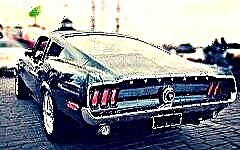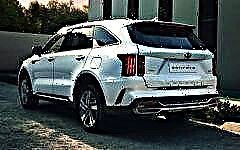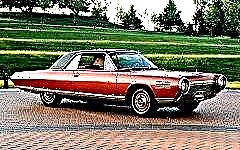

The content of the article:
- Traffic fumes
- Gasoline engine solution
- Diesel Engine Solution
- Exhaust gas aftertreatment system problems
The problem of air and environmental pollution is not new - the first major changes were noted back in the 70s of the last century. However, today, after almost half a century, the situation has worsened significantly: the number of road transport has increased significantly, along with it, the concentration of harmful substances and compounds that enter the atmosphere of the metropolis and cause serious health problems for fellow citizens has increased.
The struggle for air purity led to the creation of so-called neutralizers for gasoline and diesel engines. Today, such systems are often integrated into the on-board electronics of a vehicle. What are these systems and how do they work? Let's consider in detail.
Traffic fumes

During operation, various vehicle systems (internal combustion engines, fuel, ventilation, and chassis) emit harmful substances in the form of gas and fine dust. Some of them are non-toxic compounds found in ordinary air. The other part is poisonous, toxic and carcinogenic substances that not only negatively affect the environment, but also destroy human health. Major pollutants:
- CO (it is also carbon monoxide, or carbon monoxide) has no color and odor, however, it leads to pathology of the central nervous system, depression of the cardiovascular and respiratory systems, and in a concentration of 0.3% of the air volume leads to death. It arises as a result of incomplete combustion of fuel.
- CH (hydrocarbons) - a large group of compounds with a common structure that arise during incomplete or insufficiently fast combustion of fuel. These include paraffin, olefin, aldehyde, formaldehyde, benzene, toluene, xylene and other polycyclic compounds. These mutagens and carcinogens destroy the respiratory system and promote the growth and development of cancer cells, including blood cancer - leukemia.
- NOx (nitrogen oxides) - the main cause of acid rain, as when combined with water, nitric and nitrous acids are formed. It is one of the most serious carcinogens that cause cancer. The poisonous gas damages the respiratory system and accumulates in the blood. Formed at the time of fuel combustion.
- SОх (sulfur oxides) is similar to the previous chemical element. On contact with water, they form sulfuric and sulfurous acids. In a gas state, it causes pathology of the organs of vision and respiration.
- H2S (hydrogen sulfide) - causes general poisoning of the body, occurs when using low-quality fuel with a high sulfur content.
- NH3 - ammonia - causes blindness and burns of the upper respiratory tract.
- Soot particles are a product of incomplete combustion of fuel and oil. Basically, the problem of the occurrence of a carcinogen is typical for diesel engines.
- Fine particles of dust of hydrocarbons, sulfur, heavy metals less dangerous, since they are able to be filtered directly by the body.
- Smoke blue or white - product of diesel engine oil evaporation.
- CO2 - carbon dioxide - causes depression of the central nervous system, cardiovascular system and respiratory system, when 6% of the total volume of air is contained in the atmosphere, it is fatal.
- Other, insignificant, but no less dangerous components of exhaust gases: methane, nitrous oxide, fluorocarbon, sulfur hexafluoride.
In modern legislation, the problem of ecology and the norms of maximum permissible exhaust gases for vehicles are regulated by the technical regulations of the Customs Union TR CU 018/2011 as amended on July 11, 2016. However, from November 11, 2018, amendments will be made to it, but for now the following limit values are allowed: CO - 85 g / kW • h, HC - 5 g / kW • h, NO - 17 g / kW • h.
And the mandatory components of cars include exhaust gas treatment systems, including replaceable catalytic converters (with the exception of urea-based neutralization systems).
Gasoline engine solution

Car exhaust gas neutralization systems are two-component and three-component, and the latter appeared relatively recently. How does this system work and work?
Operating principle
The work of the neutralizer consists in the oxidation of toxic substances with the help of catalysts, as a result of which the products of incomplete combustion of the fuel are burned out or decomposed into harmless chemical elements and substances.
The active components (catalysts) are precious metals - palladium, platinum. Catalysts based on copper oxide, cobalt, nickel, vanadium, manganese, iron, and aluminum are popular and less expensive. Catalysts based on alloys of stainless or alloy steel, bronze or brass are not uncommon.
Design
The main elements of the neutralizer are a casing made of heat-resistant stainless steel, the inner surface of which is lined with a thermal expansion gasket. Inside the tank there is a gas inlet and outlet cylinder and honeycomb, on which a layer of a substance - a catalyst is applied.
Views
- The honeycomb, on which the catalyst composition is applied, can be made of ceramics. Such catalysts use a thin layer of precious rare metals as a catalyst. This is the most expensive type of exhaust gas aftertreatment system.
- A less expensive option is a honeycomb made by soldering from a thin metal foil coated with one of the types of the aforementioned compositions. Such a system is more efficient, because the area of the honeycomb is much larger than that of ceramic, and therefore is able to handle a larger volume of exhaust gases.
Device in automotive systems and operating procedures
Exhaust gas neutralization systems are located in the immediate vicinity of the internal combustion engine, under the bottom of the vehicle. The converter is hinged to the exhaust manifold on one side and the exhaust system on the other.
To ensure a high-quality chemical reaction with the participation of oxygen, the neutralization systems use air pumps or vibration valves. When the neutralization system heats up to 400-800 degrees, CO (carbon monoxide) and CH (hydrocarbons) are converted into carbon dioxide and water under the action of catalysts. The proximity of the catalytic converters to the internal combustion engine allows you to reduce the amount of NOx (nitrogen oxide) immediately after starting the engine.
Feedback from the vehicle control unit to the catalytic converter is provided by lambda probes, special oxygen sensors, or four-gas analyzers, which at the inlet and outlet of the system determine the oxygen level and the quality of exhaust gas cleaning.
Diesel Engine Solution

Like gasoline engines, diesels have exhaust gas aftertreatment systems. However, the main problem remains soot: under the influence of chemical processes, not completely burnt fuel turns into solid fine particles - carcinogens.
Neutralizers are not able to solve this problem. Therefore, before the exhaust gas enters the neutralization system, it is cleaned with a particulate filter.
Design
Similar to the neutralizer, the filter has honeycomb cells, which are staggeredly closed by storage partitions-filters of particles. Each manufacturer of a car with a diesel engine has its own control system for this parameter. Among the types of such filters are:
- DPF - accumulative filters;
- DPNR - filters, afterburning solid particles;
- FAP - filters with cerium additives for cleaning soot;
- DPF or SCR are AdBlue filters that decompose NOx (nitrogen oxides) into harmless nitrogen and water vapor.
Exhaust gas aftertreatment system problems

All of the above systems are typical for imported cars and models of the latest generation. For the domestic auto industry with carburetors, the installation of a neutralizer is not popular, is not in demand, and can also be very expensive.
The significant cost of exhaust gas neutralization systems in case of their failure on imported cars most often leads to an attempt to get rid of such a "necessary" part. And it can fail for a number of reasons:
- The use of low-quality or "improved" fuel additives;
- Ingress of fuel or oil into the working cavity;
- Unstable engine operation;
- Mechanical damage to the case;
- A sharp temperature drop on the case.
It is impossible to predict the exact mileage of the neutralizer: on some cars it hardly exceeds 100 thousand km, on others it behaves perfectly when crossing the 200 thousand mark.
Driving with a faulty exhaust gas neutralization system leads to breakdowns in the car: failure or periodic spontaneous loss of speed, problems with starting the internal combustion engine, loss of compression in the cylinders, in diesel engines - to turbine malfunction.
How to solve the problem of the exhaust gas aftertreatment system? There is no need to rush and dismantle the neutralizers, because the fight for the environment has just begun. In addition to the fact that unforeseen breakdowns may occur, which the "deceived" electronics cannot diagnose, the requirements for exhaust emissions during maintenance are becoming more stringent, which means that not all owners will be able to pass it. Yes, and toxic exhaust and carcinogens can enter the passenger compartment in high concentrations and cause irreparable harm to the health of the driver and passengers.
It is much more expedient to carry out a timely preventive check of the condition of the neutralizer and particulate filter and, in the event of a breakdown or malfunction, critical for operation, to replace it with a new one. After all, the total cost of eliminating problems that have arisen due to the absence of this important element can be significantly higher.











